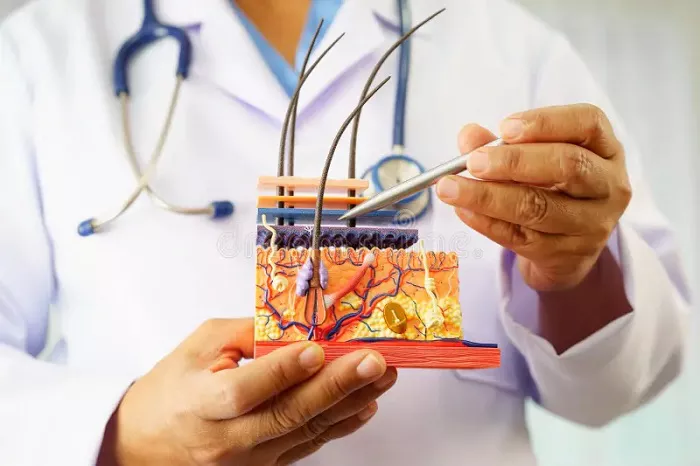Hair transplant surgery is a popular and effective solution for hair loss, but many patients wonder how many hair follicles can be transplanted in one session. In this article, we will explore the factors that can affect the number of hair follicles that can be transplanted in one session and what patients can expect during the procedure.
What is Hair Transplant Surgery?
Hair transplant surgery is a cosmetic procedure that involves the transplantation of hair follicles from one part of the scalp to another. The procedure is typically performed under local anesthesia and can take several hours to complete.
During the procedure, the surgeon will remove hair follicles from the donor area of the scalp, typically the back or sides of the head, and transplant them to the recipient area, which is typically the front or top of the head. The surgeon will make tiny incisions in the scalp to accommodate the transplanted hair follicles.
The transplanted hair follicles will continue to grow in the new location, resulting in natural-looking hair growth. The procedure can provide significant improvements in hair density and appearance, but it may not be able to restore a full head of hair or reverse advanced hair loss.
Factors That Can Affect the Number of Hair Follicles Transplanted
The number of hair follicles that can be transplanted in one session can vary depending on several factors, including:
Patient’s Hair Loss:
The extent of the patient’s hair loss can affect the number of hair follicles that can be transplanted in one session. Patients with advanced hair loss may require multiple sessions to achieve the desired results.
Donor Hair Availability:
The availability of donor hair can also affect the number of hair follicles that can be transplanted in one session. Patients with limited donor hair may not be able to have as many hair follicles transplanted in one session as patients with more donor hair.
Surgical Technique:
The surgical technique used by the surgeon can also affect the number of hair follicles that can be transplanted in one session. Highly skilled and experienced surgeons may be able to transplant more hair follicles in one session than less experienced surgeons.
Patient’s Health:
The patient’s overall health can also affect the number of hair follicles that can be transplanted in one session. Patients with underlying health conditions may not be able to have as many hair follicles transplanted in one session as patients who are in good health.
Age:
Age can also play a role in the number of hair follicles that can be transplanted in one session. Older patients may have thinner hair or less donor hair available, which can affect the number of hair follicles that can be transplanted in one session.
Hair Texture:
The texture of the patient’s hair can also affect the number of hair follicles that can be transplanted in one session. Patients with coarse or curly hair may require more hair follicles to achieve the desired results.
In conclusion, the number of hair follicles that can be transplanted in one session will vary depending on the patient’s hair loss, donor hair availability, surgical technique, patient’s health, age, and hair texture. It is important for patients to discuss their expectations with the surgeon during the initial consultation and to choose a qualified and experienced surgeon to perform the procedure.
What Patients Can Expect During the Procedure
During a hair transplant procedure, patients can expect the following:
Anesthesia:
The procedure is typically performed under local anesthesia, which numbs the scalp and minimizes discomfort during the procedure.
Donor Hair Removal:
The surgeon will remove hair follicles from the donor area of the scalp, typically the back or sides of the head. The hair follicles are removed using a micro-punch tool, which leaves small, circular scars that are typically not visible once the hair grows back.
Hair Follicle Preparation:
The hair follicles are then prepared for transplantation. This involves separating the individual hair follicles from the surrounding tissue and trimming them to the appropriate size for transplantation.
Recipient Site Creation:
The surgeon will create tiny incisions in the recipient area of the scalp to accommodate the transplanted hair follicles. The incisions are typically made using a micro-blade or needle.
Hair Follicle Transplantation:
The hair follicles are then transplanted into the recipient area of the scalp. The surgeon will carefully place each hair follicle into the incisions, ensuring that they are positioned at the correct angle and direction for natural-looking hair growth.
Post-Operative Care:
After the procedure, patients will need to follow the post-operative care instructions provided by the surgeon. This may include avoiding strenuous activity, avoiding exposure to sunlight, and taking medication to prevent infection.
The duration of the procedure will depend on the number of hair follicles being transplanted. It can take several hours to complete, and patients may need to return for multiple sessions to achieve the desired results.
In general, patients can expect some mild discomfort and swelling after the procedure, but this typically resolves within a few days. The transplanted hair follicles will initially fall out within a few weeks of the procedure, but they will begin to regrow within a few months. Patients can expect to see noticeable improvements in hair density and appearance within 6-12 months after the procedure.
Conclusion
In conclusion, the number of hair follicles that can be transplanted in one session will vary depending on the patient’s hair loss, donor hair availability, surgical technique, and the patient’s health. Most patients can expect to have between 1,000 and 4,000 hair follicles transplanted in one session. It is important for patients to discuss their expectations with the surgeon during the initial consultation and to choose a qualified and experienced surgeon to perform the procedure.
Related Topics:

